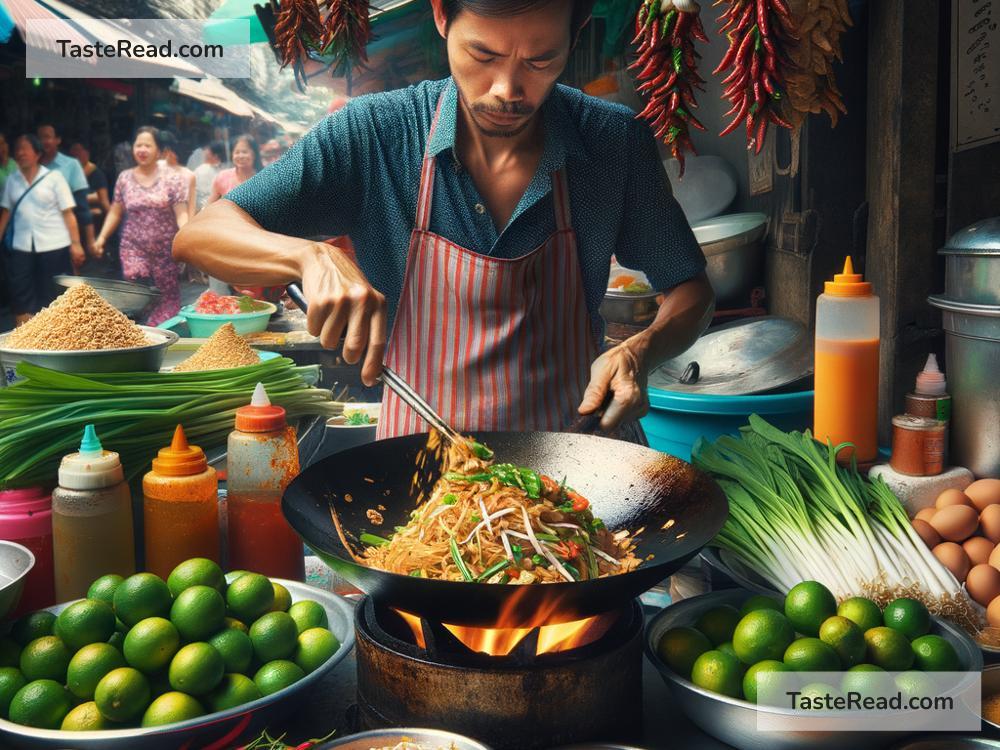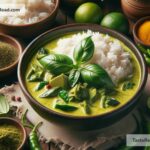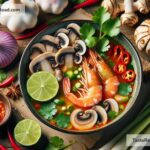The Influence of Thai Pad Thai: A Worldwide Love for Noodles
Thai cuisine is famous for its balance of flavors—spicy, salty, sweet, and sour. Among all the dishes in Thai food, one stands out globally as a favorite: Pad Thai. This fried noodle dish has captured hearts everywhere, becoming a symbol of Thai culture and cuisine. But how has a humble plate of noodles gained worldwide fame? Let’s explore the influence of Thai Pad Thai and why it has become more than just a meal; it’s an ambassador for Thailand.
What is Pad Thai?
Pad Thai is a simple yet delicious dish made from stir-fried rice noodles, egg, tofu, shrimp or chicken, and bean sprouts. It’s flavored with tamarind paste, fish sauce, sugar, garlic, chili, and lime, giving it its signature sweet, sour, and savory taste. Often served with crushed peanuts, fresh lime, and chili flakes on the side, Pad Thai offers customization for different taste preferences.
Its name “Pad Thai” translates to “Thai-style stir fry.” It’s easy to cook, colorful to look at, and bursting with flavors—making it a favorite among locals and tourists alike.
The Origins of Pad Thai
Pad Thai has an interesting history. Although it is recognized worldwide as a quintessential Thai dish, it wasn’t always a part of traditional Thai cuisine. The dish became popular in the 1930s during a time of economic hardship in Thailand. To promote national identity and encourage the use of rice, the country’s then Prime Minister, Plaek Phibunsongkhram, introduced Pad Thai as part of a cultural campaign. The dish quickly became a symbol of Thai unity and culinary pride.
By combining accessible ingredients like rice noodles, local vegetables, and simple proteins, Pad Thai became affordable to prepare and a nutritious go-to meal. Its unique flavor profile and versatility allowed it to stand out, and soon, Pad Thai became a staple across Thailand.
Pad Thai’s Journey to the World
What has made Pad Thai so influential is its ability to cross borders. Over time, Thai people migrating to other countries brought their culinary traditions with them. As Thai restaurants began opening worldwide, Pad Thai emerged as one of the most popular dishes on the menu. It’s easy to see why—it’s flavorful, familiar yet exotic, and suitable for all kinds of diners, whether they prefer vegetarian or non-vegetarian options.
Tourism also played a big role in spreading the love for Pad Thai. Millions of tourists visit Thailand every year, and tasting authentic Pad Thai is often high on their list of experiences. After enjoying it in the bustling streets of Bangkok or a relaxing beachside restaurant in Phuket, travelers return home craving the dish and often seek it out in their countries.
Another driving force behind Pad Thai’s popularity is its adaptability. While traditional ingredients are used in Thailand, versions of Pad Thai around the world sometimes adjust based on local tastes and ingredient availability. For example, in Western countries, tofu might be replaced with chicken, or tamarind might be swapped for lime juice. Yet, no matter the variation, the essence of Pad Thai persists—its balance of flavors and comforting qualities.
Pad Thai in Pop Culture
Pad Thai has not only influenced the culinary scene but also pop culture. It is frequently featured in cooking shows, food blogs, and social media posts. Instagram, food YouTube channels, and TikTok are filled with Pad Thai recipes and images of the dish from restaurants across the globe. As Thai cuisine becomes a trend, Pad Thai remains the star attraction.
In addition, Thai restaurants often use Pad Thai as an entry point for introducing diners to other Thai dishes. Once someone enjoys Pad Thai, they’re more likely to explore other parts of Thai cuisine, such as Tom Yum soup, green curry, and mango sticky rice. Pad Thai essentially opens the door to the rich world of Thai food.
Why We Love Pad Thai So Much
So, what is it about Pad Thai that makes it so influential? It’s all about the connection it creates.
First, Pad Thai represents Thailand’s rich culture. With every bite, you experience the country’s commitment to harmony in taste and its emphasis on fresh ingredients.
Second, Pad Thai is approachable for people of all ages, nationalities, and dietary needs. It’s equally loved by adventurous foodies and picky eaters because it strikes a perfect balance in flavor that isn’t overwhelming.
Lastly, Pad Thai has the power to bring people together. Whether shared at a family meal in Thailand or eaten in a fusion restaurant halfway across the world, Pad Thai creates memories and conversations. Its popularity reminds us that food is universal—it helps us connect despite our cultural differences.
Conclusion
The influence of Thai Pad Thai goes far beyond just being a dish. It’s a cultural phenomenon that shares the tastes of Thailand with the entire world. From local diners to five-star restaurants, Pad Thai represents the beauty of Thai cuisine: simple recipes made with love and balanced flavors. Its journey shows how food can break boundaries, teach us about other cultures, and connect us all.
So, the next time you enjoy a plate of Pad Thai, you’re not just eating noodles—you’re tasting a piece of Thailand’s history and its impact on global cuisine.


